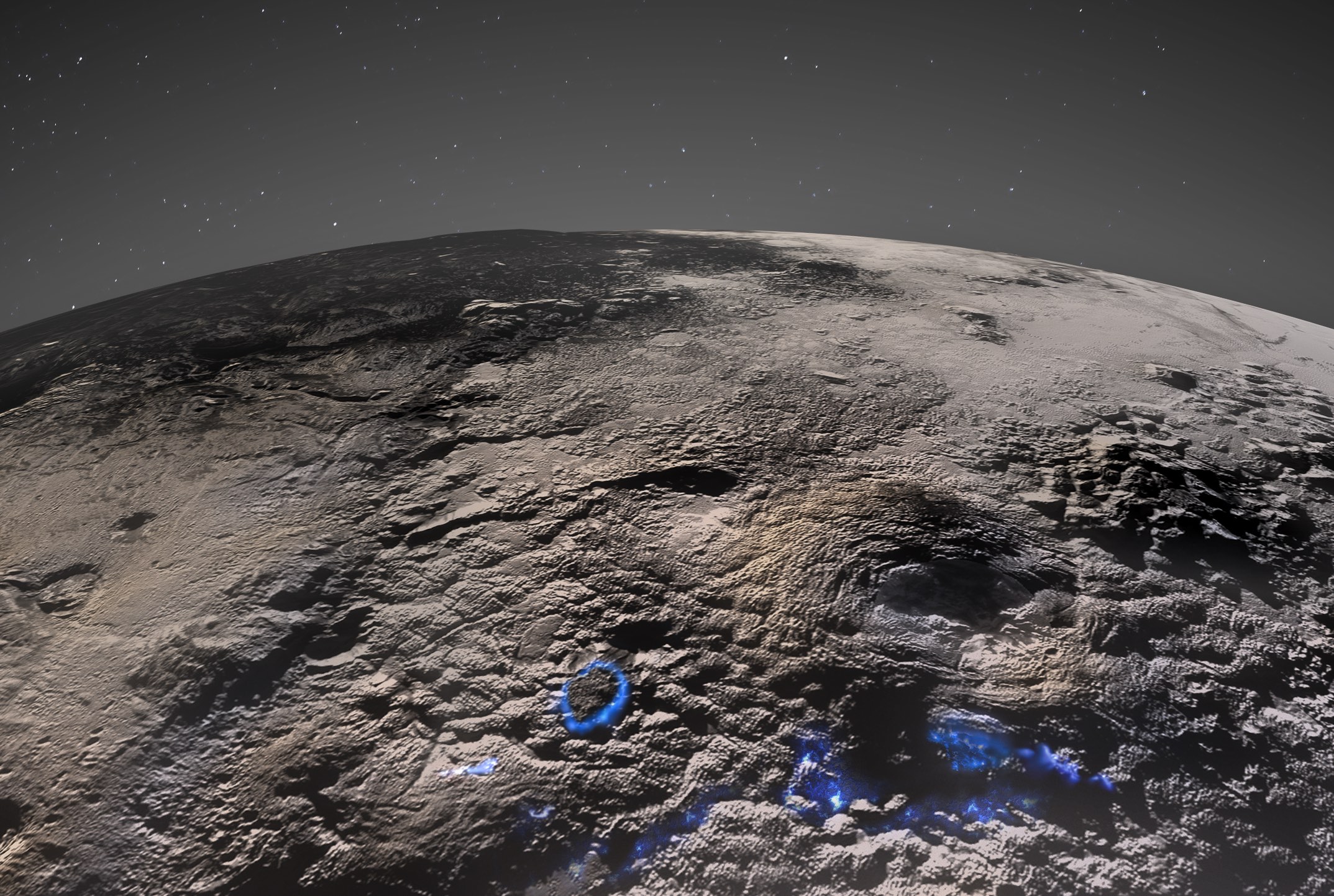4 mile high ice volcanoes on Pluto
The exploration of the dwarf planet Pluto is divided into two eras: Before the arrival of NASA’s New Horizons probe, the celestial body was thought to be an icy, unspectacular Kuiper Belt object. But New Horizons then delivered images and data that sent astronomers into raptures. The composition of Pluto’s surface shows that there are a variety of ages here, from relatively old, heavily cratered regions to very young surfaces with few to no impact craters.
One of the regions with very few impact craters is dominated by huge mountains with humpbacked flanks not found anywhere else in the known solar system. A team of researchers led by Kelsi Singer of SWRI has now taken a closer look at this area southwest of the Sputnik-Planitia ice sheet. It includes an ancient impact basin about 1 000 km long.
The authors studied the geomorphology of the area and concluded that it was formed by cryovolcanism. They describe numerous volcanic domes in the region, ranging from a few to seven kilometers high and 10 to 150 km in diameter, with some domes merging into larger structures. The estimated volume of Wright Mons alone would have to equal the volume of Mauna Loa in Hawaii, one of the largest volcanoes on Earth. The only difference is that Mauna Loa is made of rock, while Wright Mons is made of water ice. To create such a structure, several eruption sites and a large volume of material would be required.
Since the terrain is free of impact craters (unlike other locations on Pluto’s surface), the cryovolcanic activity here must be relatively recent. This would mean that Pluto has significantly more residual heat in its interior than previously thought, which could drive such cryovolcanic activity.
